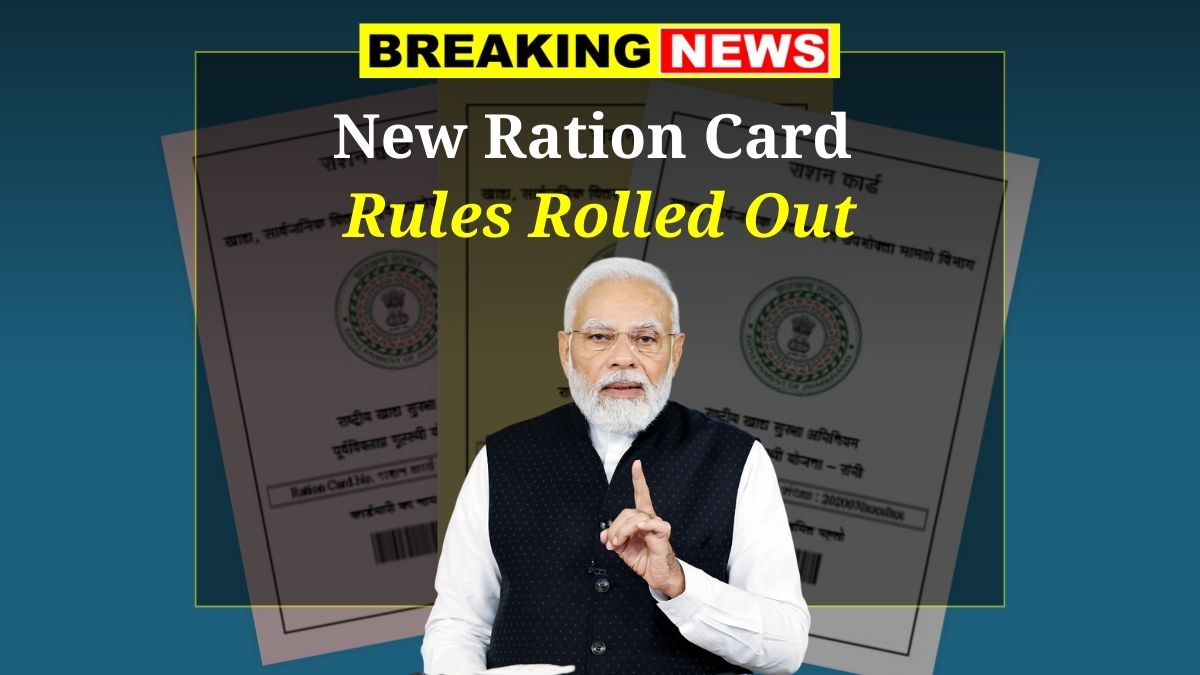Ration Card Rules – If you have a ration card or are planning to apply for one this year, there’s important news you shouldn’t miss. The Government of India has updated several ration card rules in 2025, and these changes affect how you apply, transfer, or update your ration card details.
Whether you’re shifting cities, updating family details, or applying for the first time, the process is now more digital, faster, and a lot more user-friendly. Let’s break down everything that’s changed and what you need to do now.
What’s New in the 2025 Ration Card Rules?
The central government, along with state governments, has revamped the Public Distribution System (PDS) to make it more transparent and efficient. Here’s a quick list of what’s been introduced:
- Aadhaar is now mandatory for all family members
- Online applications are now preferred over offline forms
- ONORC (One Nation One Ration Card) has been made smoother for migrants
- New eligibility categories added, like single women and elderly without support
- Income and document requirements have been updated
- You can now track your application status online
Different Types of Ration Cards in 2025
It’s important to know which type of card your family is eligible for before applying:
| Type of Card | Who It’s For | Monthly Benefits | Income Criteria |
|---|---|---|---|
| APL | Above Poverty Line families | Limited subsidized food | Income above ₹1.2 lakh/year |
| BPL | Below Poverty Line families | Higher subsidy | Income below ₹1.2 lakh/year |
| AAY | Poorest and most vulnerable | 35 kg foodgrains/month | Need-based |
| PHH | Priority households (SECC data) | 5 kg/person/month | Varies by state |
| Migrant Card (ONORC) | Inter-state workers | Full benefits across states | Based on home state eligibility |
| Single Women Card | Unmarried or widowed women above 35 | 5 kg/person/month | Below ₹1.5 lakh/year |
Some states also offer state-specific ration cards with their own rules.
How to Apply for a New Ration Card in 2025
Applying for a new card is now much easier — especially if you go through the online route. Here’s a quick step-by-step guide:
Documents You’ll Need:
- Aadhaar cards for all family members
- Proof of address (electricity bill, rent agreement, etc.)
- Identity proof (Voter ID, PAN, etc.)
- Income certificate
- Passport-size photos
- Bank account details (optional, but recommended)
Online Application Process:
- Go to your state’s official Food & Civil Supplies website
- Click on “Apply for New Ration Card”
- Fill in your family and personal details
- Upload scanned copies of all documents
- Submit the form and note down the application reference number
- You’ll get an SMS or email update once your form is received
- A local official will visit your home for verification within 15–30 days
Offline Option (Only for exceptions):
- Visit the nearest ration office
- Submit the physical form with all documents
- Collect your acknowledgment slip
- Track your status via phone or in person
Transferring a Ration Card After Moving
If you’re relocating, your ration card can move with you. The process depends on whether you’re moving within the same state or to another state.
If You’re Moving Within the Same State:
- Log in to your state’s ration portal
- Choose “Transfer Ration Card”
- Enter new address and upload proof
- Submit the request and track online
If You’re Moving to a Different State (ONORC):
- Visit the new state’s ration portal
- Use Aadhaar-linked mobile to fetch existing details
- Select “Migrant Transfer under ONORC”
- Submit biometric verification and new address
- A digital card will be issued after approval
Processing usually takes 7 to 20 days depending on your case.
How to Delete or Remove Family Members
If someone in your family has passed away, got married, or moved out, it’s important to update your ration card. Here’s how:
- Go to “Modify Ration Card” on the state portal
- Select “Delete Member”
- Enter required details and upload documents such as:
- Death certificate
- Marriage certificate
- Divorce/separation affidavit
- Submit the request and wait for verification
Common Mistakes to Avoid
Here are a few things that could delay your application or get it rejected:
- Incomplete or missing documents
- Wrong Aadhaar numbers
- Using old income proofs
- Not updating your address after moving
- Choosing the wrong ration card type
Why These Changes Matter
The 2025 updates aren’t just about digitizing the process. They’re aimed at:
- Making the system faster and cleaner
- Ensuring only eligible families get benefits
- Allowing portability for migrant workers
- Cutting out duplicate or fake ration cards
It’s a big step toward making the PDS more efficient and citizen-friendly.
Final Thoughts
Whether you’re applying for a new ration card, shifting to a new city, or updating your family records, the 2025 changes make the process simpler, faster, and more transparent.
Just make sure your Aadhaar is linked, your documents are ready, and you follow the updated steps — and you’re good to go.
Stay updated with your state’s official portal, and don’t hesitate to reach out to your local ration office if you need help.





